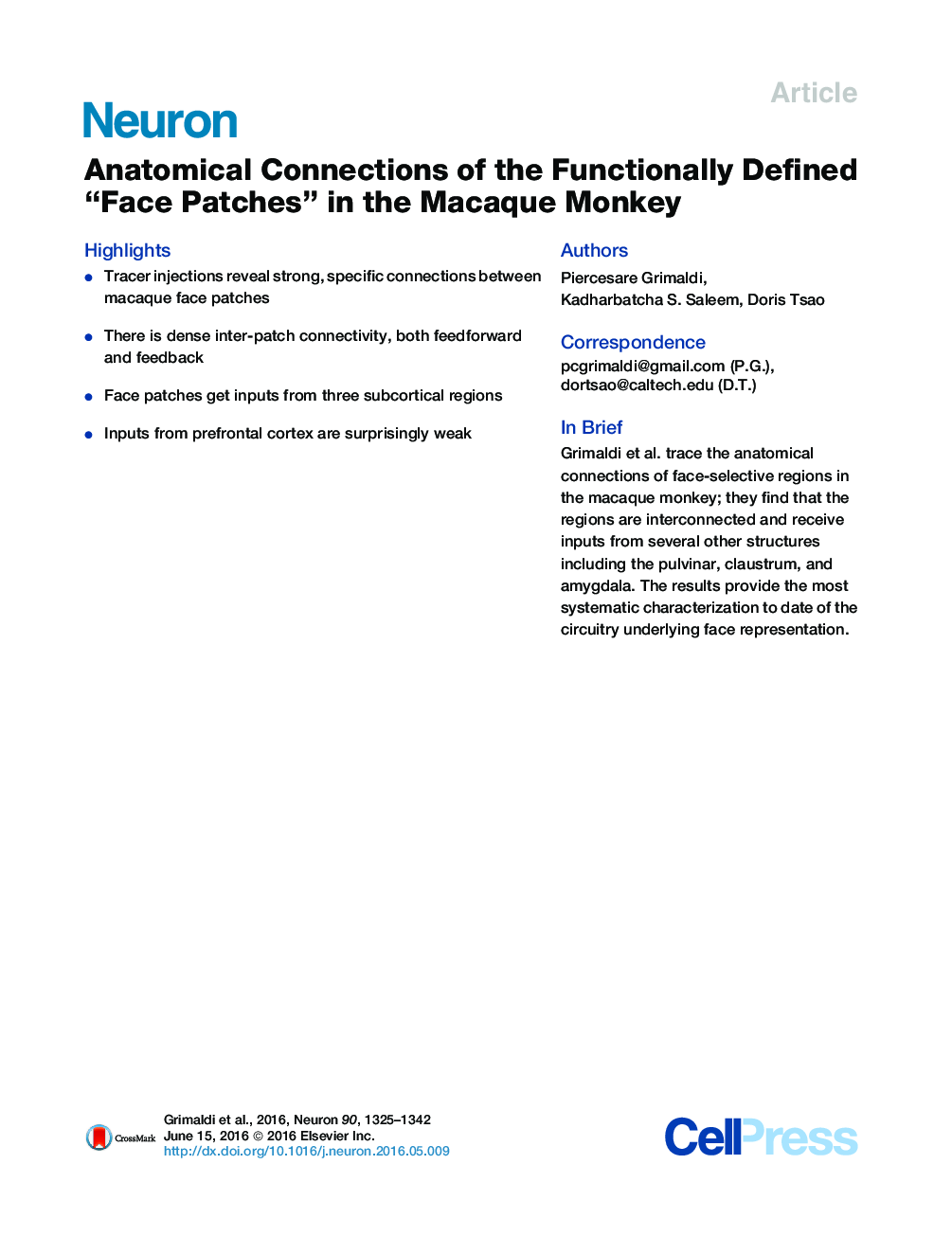| Article ID | Journal | Published Year | Pages | File Type |
|---|---|---|---|---|
| 4320691 | Neuron | 2016 | 18 Pages |
•Tracer injections reveal strong, specific connections between macaque face patches•There is dense inter-patch connectivity, both feedforward and feedback•Face patches get inputs from three subcortical regions•Inputs from prefrontal cortex are surprisingly weak
SummaryThe neural circuits underlying face recognition provide a model for understanding visual object representation, social cognition, and hierarchical information processing. A fundamental piece of information lacking to date is the detailed anatomical connections of the face patches. Here, we injected retrograde tracers into four different face patches (PL, ML, AL, AM) to characterize their anatomical connectivity. We found that the patches are strongly and specifically connected to each other, and individual patches receive inputs from extrastriate cortex, the medial temporal lobe, and three subcortical structures (the pulvinar, claustrum, and amygdala). Inputs from prefrontal cortex were surprisingly weak. Patches were densely interconnected to one another in both feedforward and feedback directions, inconsistent with a serial hierarchy. These results provide the first direct anatomical evidence that the face patches constitute a highly specialized system and suggest that subcortical regions may play a vital role in routing face-related information to subsequent processing stages.
